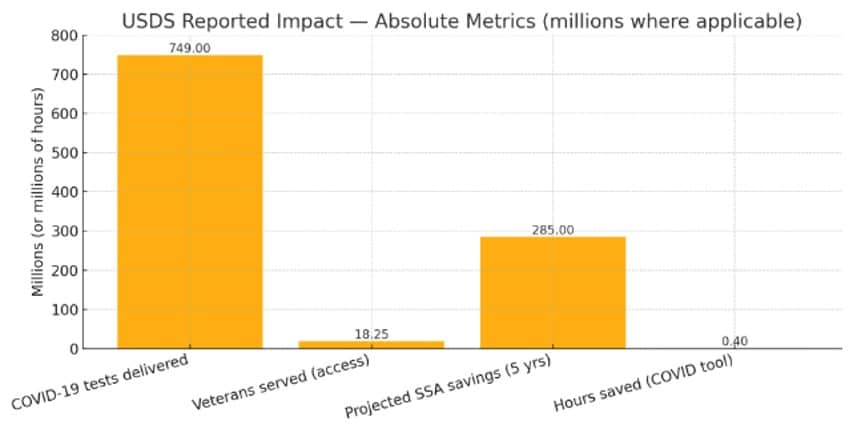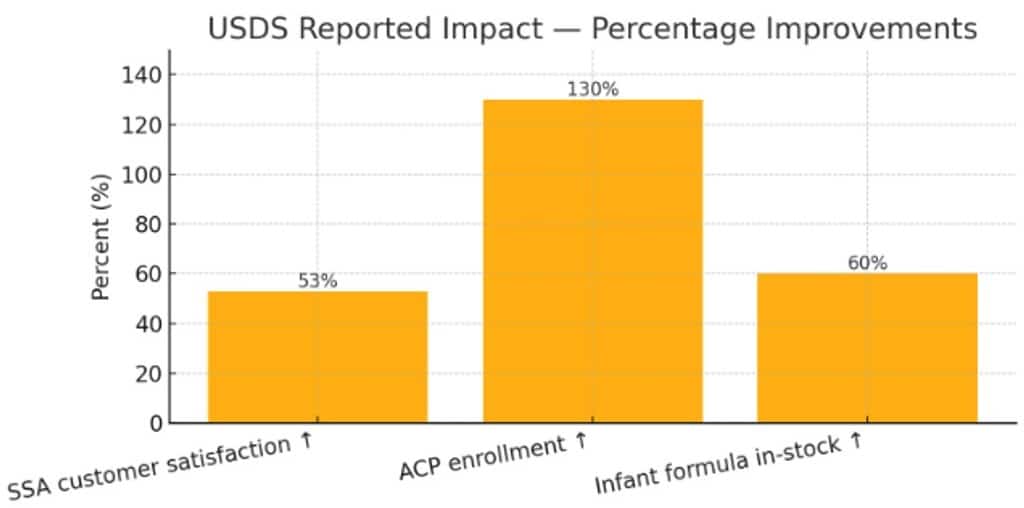
Government solutions that replace paper and spreadsheets with auditable workflows, citizen portals, and dashboards you can act on often rely on case management software for government. This guide explains what to demand from a system, common government agencies use cases, government-sourced impact numbers, and practical steps to roll a solution out without disrupting service.
Government agencies handle permits, benefit applications, investigations, FOIA requests, and more, all of which require effective case management. The right government case management system keeps work visible, enforces compliance with audit trails and role-based controls, and lets residents submit and track requests online, making overall case management more efficient. Agencies that modernize measure clear gains in speed, transparency, and citizen satisfaction (sources: U.S. Digital Service, GAO). Effective case management helps case managers and service agents focus on decisions that matter, rather than repetitive manual tasks, by streamlining overall case management processes.
When evaluating government case management software, require these features to support the case management process and enhance overall case management effectiveness:
Digital-government playbooks and GAO reviews show that connecting case management systems and delivering in small, tested increments reduces risk, speeds value, and strengthens case management. Start with the most common handoffs, then add integrations as you identify gains and improve efficiency.


Case management systems fit many government organizations’ needs and support government case management across multiple departments. Typical examples include:

Licensing & permits: online intake, conditional approvals, automated fee processing, and tracking of related interactions.
Social services: eligibility checks, renewals, and outcome tracking while ensuring accurate data.
Investigations & enforcement: centralized evidence handling, chain-of-custody, redaction tools, and record management.
Legal & court tracking: deadlines, filings, and document assembly to help case workers and case managers resolve cases efficiently.
Public records / FOIA: triage, deadlines, and public-facing status pages accessible in a central location.
The U.S. Digital Service documents measurable results from targeted digital projects. These examples show what modern, user-centered government case management software can deliver:
749 million COVID-19 test kits delivered via a USDS-built site.
18.25 million veterans gained easier access to services after VA improvements.
$285 million projected SSA savings over five years after platform modernization.
53% increase in SSA.gov customer satisfaction following a relaunch.
130% increase in Affordable Connectivity Program (ACP) enrollment after modernization.


These figures demonstrate how public sector agencies can streamline workflows, reduce manual tasks, and make data-driven decisions by designing services around users and simplifying outdated technology.
Define outcomes: faster processing, greater transparency, or lower costs — pick the top priorities for overall efficiency.
Map current work: document handoffs, pain points, routine tasks, and data sources before vendor conversations.
Match features to outcomes: choose for evidence handling, citizen intake, case data, or analytics based on need.
Confirm compliance: require FedRAMP, CJIS, or HIPAA support if your data demands secure storage.
Pilot and measure: run a focused pilot, track cycle time and reopen rates, then scale if metrics improve and efficiency increases, using case management software to track progress accurately.
These steps come from real government agencies rollouts and federal guidance. They keep projects predictable and adoption strong:
Keep pilots small and visible. Deliver a measurable win in 60–90 days to build momentum and improve productivity tools.
Train people, not just systems. Provide role-based training and short, quick-reference guides for service agents and case managers.
Clean data before migration. Map legacy fields and validate content — don’t import garbage into central location.
Measure from day one. Track backlog, resolution workflows, reopen rate, and user satisfaction to effectively streamline operations.
Procure for delivery. Use iterative SOWs, clear acceptance criteria, and testing milestones so vendors deliver usable increments and help assign tasks efficiently.
A digital platform that captures case intake, manages case management process, enforces compliance, and helps government agencies resolve requests faster.
No. Good software removes repetitive routine tasks so staff can focus on decisions that require judgment.
Costs vary. Small municipalities may subscribe for a few thousand a year, while large enterprise implementations can run into six figures, depending on scope. Efficiency gains often justify investment.
Yes. Many public sector agencies platforms scale down with low-code templates and subscription pricing for smaller government agencies.
Government case management software makes workflows visible, enforces compliance, improves citizen outcomes, and helps case managers and case workers resolve cases faster. Start by defining the outcome you want, map current workflows, pilot a focused solution, and measure the wins.
Publish a clear vendor comparison, offer a downloadable checklist, and create follow-up posts that answer narrow questions — those steps will help your article rank and serve decision-makers better than vendor landing pages. Proper document management and accurate reporting ensures accountability, efficiency, and support for data-driven decisions across the public sector.
A quiet brilliance unfolds as you step into this blog — like opening a window to a calm, sunlit morning where each idea arrives with purpose and grace. Every article feels like a conversation with a trusted guide, gently helping readers rediscover the art of working smarter, not harder.
Venture further, and you’ll find content tailored to both the seasoned entrepreneur and the rising virtual professional. From legal offices to real estate teams, each post offers insight crafted with experience, care, and a deep understanding of what modern work truly needs.
What is an ER Scribe? A Complete Guide to Emergency Room Documentation and Virtual Scribes An ER scribe is a
How Do Document Review Specialists Virtual Assistant Operate In Law Firms How Do Virtual Assistant Document Review Specialists Work Within
Why Virtual Legal Assistants Important In Law Firms Why Virtual Legal Assistants Important In Law Firms The new legal environment
Executive Administrator vs Executive Assistant What's the Real Difference? Understanding the roles of an executive administrator vs executive assistant, often
The Practical Guide for Busy Lawyers, Law Firms, and Virtual Legal Assistants If you’ve Ever Wondered How to Free Up
Administrative Assistant Hard Skills Administrative Assistant Hard Skills: What Do You Need To Know? Administrative assistant hard skills, technical abilities,
Legal Assistant Certification Legal Assistant Certification: Is It The Correct Move For Your Career? Legal assistant certification program is a
Virtual Assistant for Lawyers The Complete Guide to Hiring a Virtual Assistant for Lawyers If you’re interested in the legal
Outsourced Legal Intake Outsourced Legal Intake: Why A Legal Intake Specialist Matters For Law Firms The first impression legal matters
Accounting Interview Questions And Answers Accounting Interview Questions and Answers: How Can You Prepare Effectively? Starting a career in the
Top Legal Outsourcing Companies: Your Friendly Guide To Smart Legal Support Ever find yourself staring at a mountain of legal
Remote Legal Assistant Jobs: Find, Qualify & Thrive in Law Finding remote legal assistant jobs today is both promising and
Real Doctors Note Example Authentic Real Doctors Note Example: What You Need to Know Need a real doctors note example?
Paralegal Assistant Jobs Why Are Paralegal Assistant Jobs So Critical in Today’s Legal Landscape? IntroductionLooking for insights into paralegal assistant
Blueface Looks Shocking New Photos from Prison Go Viral Blueface’s new prison photos reveal a dramatic transformation, shocking fans with
Elon Musk Quotes: Inspiration, Meaning, and How to Apply Them in Real Life The tech visionary Elon Musk is known
What Is an Intake Specialist at a Law Firm The Unsung Hero of Every Law Firm Picture this: Someone’s had
Virtual Legal Assistant Services Virtual Legal Assistant Services: Save Time, Cut Costs, and Scale Your Firm If evenings and weekends
Legal Assistant vs Legal Secretary Legal Assistant vs Legal Secretary: What’s the Real Difference? Choosing between a legal assistant vs
Legal Assistant Training Is Legal Assistant Training The Best Way To Begin Your Legal Career? The focus key phrase “legal
Transcription and Translation What Is the Difference Between Transcription and Translation? Many people confuse transcription with translation, especially when they
Care Coordinator vs Case Manager Care Coordinator vs Case Manager: What's the Difference? If you've been wondering how a care
Case Management Software for Government: Features & Benefits Government solutions that replace paper and spreadsheets with auditable workflows, citizen portals,
How To Become A Legal Transcriptionist How to Become a Legal Transcriptionist: Your Step-by-Step Guide If you've ever asked yourself
Legal Transcriptionist Work Legal Transcriptionist Work: How to Build a Rewarding Career If you’ve ever wondered what it’s like to
Virtual Legal Assistant Benefits: How VAs Save Time, Cut Costs & Boost Billable Hours If you’re running a law firm
Cristiano Ronaldo Injury Update Recovery Timeline, Match Outlook & Digital Health Support Football fans, sports media readers, and healthcare professionals
What Is a Legal Intake Specialist What Is a Legal Intake Specialist? In the intro, let's define what is a
How Do I Become a Legal Transcriptionist? A Practical Guide If you’re here wondering, “How do I become a legal
Attorney vs Lawyer Key Differences and How a Virtual Legal Assistant Can Help The debate over attorney vs lawyer has
How to Say Hi in Spanish Essential phrases for greeting people in Spanish Master essential Spanish greetings and learn when
Remote Medical Interpreter Jobs: Everything You Need to Know Finding remote medical interpreter jobs can feel like navigating a maze—especially
Legal Intake Specialist Job Description Legal Intake Specialist Job Description: What Does the Work Entail? If you're searching for an
Paralegal Assistant Salary in 2025: What You Need to Know Knowing how much a paralegal assistant salary earns in 2025
Remote Paralegal Consultation Top Remote Paralegal Consultation Services for Law Firms Are you wondering how remote paralegal consultation can benefit
What Does It Take to Be a Legal Assistant? 7 Key Steps & Skills Becoming a stellar legal assistant or
How Legal Consultation Can Assist In Insurance Claims How Legal Consultation Can Help in Insurance Claims If you ever had
Legal And Administrative Assistant Top 5 Essential Skills for a Legal and Administrative Assistant Career Thinking of becoming a legal
Virtual Case Manager Jobs Virtual Case Manager Jobs: What Should You Know Before Applying? If you're searching for virtual case
Can a Legal Assistant Become a Lawyer? Definitive Guide Can a legal assistant become a lawyer? For many paralegal professionals,
How to Become a Legal Assistant How to Become a Legal Assistant: Your Step-by-Step Career Guide If you're wondering how
What Does Contingent Mean In Real Estate What Does Contingent Mean in Real Estate? A Clear Guide for Buyers and
Accounting Virtual Assistant Salary Accounting Virtual Assistant Salary: Here's What You Must Know In today’s competitive business environment, many US
Operations Assistant Salary Operations Assistant Salary in 2025: Career Outlook, Pay Trends & Job Security If you're considering a operations
Top Healthcare Outsourcing Companies In The US Top Healthcare Outsourcing Companies in the US: Who Leads the Industry Today? In
What Do Real Estate Virtual Assistants Do? What Do Real Estate Virtual Assistants Do? Essential Tasks You Need to Know
What Does a Medical Scribe Do? Understanding the Role in Today’s Healthcare System If you’ve ever asked, what does a
What Does Good Customer Service Mean to You What Does Good Customer Service Mean to You: Key Insights Good customer
Executive Assistant Duties: The Ultimate 2025 Guide As organizations navigate an increasingly complex business landscape, executive assistants (EAs) with expertise
How to Become a Social Media Manager How to Become a Social Media Manager in 2025 (Step-by-Step Career Guide) In
What is a Case Manager What is a Case Manager: A Complete Guide to Their Role and Impact When life
Marketing Assistant Job Description Marketing Assistant Job Description: The Ultimate Guide A well-crafted marketing assistant job description is the foundation
Bilingual Virtual Receptionist A Smart Move for a Diverse Business Landscape A bilingual virtual receptionist can help your business connect
Appointment Setter vs Sales Representative What’s the Real Difference? In the world of sales, roles can blur. That’s why many
Administrative Virtual Assistant Duties Administrative Virtual Assistant Duties: The Ultimate Guide In a fast‑paced business landscape, every minute counts. Enter
What Are Virtual Receptionist Jobs? A Complete Guide In an era of remote work and on‑demand customer service, virtual receptionist
Legal Assistant Interview Questions Legal Assistant Interview Questions: What Should You Expect? Legal assistant interview questions can make or break
A 2025 Guide to Understanding This Virtual Legal Role When the headline “Todd Chrisley prison sentence” first broke, fans of
The Complete Guide to Virtual Receptionist Appointment Scheduling In today’s always-on world, missing a single client phone call can mean
Virtual Scribing Hire a Virtual Scribe for Better Patient Care Virtual or digital scribing provides real-time documentation support for healthcare
Executive Assistant Job Description Executive Assistant Responsibilities — 10 Core Duties & How to Master Them “An executive assistant (EA)
Efficient Project Management With Virtual Assistants Efficient Project Management with Virtual Assistants: 2025 Insights If you’re juggling multiple deadlines, stakeholder
0perations Assistant Work Master Operation Assistant Work Today Easily A Virtual Operations Assistant ensures your business moves forward efficiently by
Jams Launches Peanut Butter and Jelly Athlete-backed Jams takes on the peanut butter and jelly market amid the protein craze
The death of Andrea Gibson Celebrated Poet and Performance Artist Leaves a Lasting Legacy Celebrated poet and performance artist Andrea
Virtual Assistant for Lead Generation How a Virtual Assistant for Lead Generation Elevates Your Sales in 2025 Have you ever
Legal Assistant and Paralegal: What You Need to Know Choosing between a legal assistant and paralegal can feel daunting—after all,
What Is Paralegal? A 2025 Guide to Understanding This Virtual Legal Role Blue-collar work roles, such as paralegals and legal
What Does a Virtual Operations Assistant Manager Really Do in 2025? In today’s remote-first business world, staying organized in your
Virtual Assistant For Accountant Virtual Assistant for Accountant: Your 2025 Guide to Growing Smarter, Not Harder If you’re an accountant
Want to Work in Law Without Becoming a Lawyer? Here's the Truth About How to Become a Paralegal If you
Todd Chrisley Trump’s Hollywood-Style Pardon: Did Todd Chrisley Buy Freedom With Fame and Politics? When former President Donald Trump pardoned
Todd Chrisley Legal Assistant Trump’s Chrisley Pardon Sparks Outrage: Is Justice Only for the Famous? The Chrisleys are back in
Pardoned or Privileged? The Todd Chrisley Saga Sparks Debate on Justice and Influence In a move that has ignited both
What is a Legal Case Manager What Is a Legal Case Manager? Role, Salary & Hiring Guide 2025 Have you
What Is Legal Assistant A Guide for Law Firms and Legal Professionals As the legal industry changes with technology, law
Paralegal vs Legal Assistant What’s the Right Legal Career Path for You? If you’re interested in the legal field but
Paralegal vs Legal Assistant What’s the Right Legal Career Path for You? If you’re interested in the legal field but